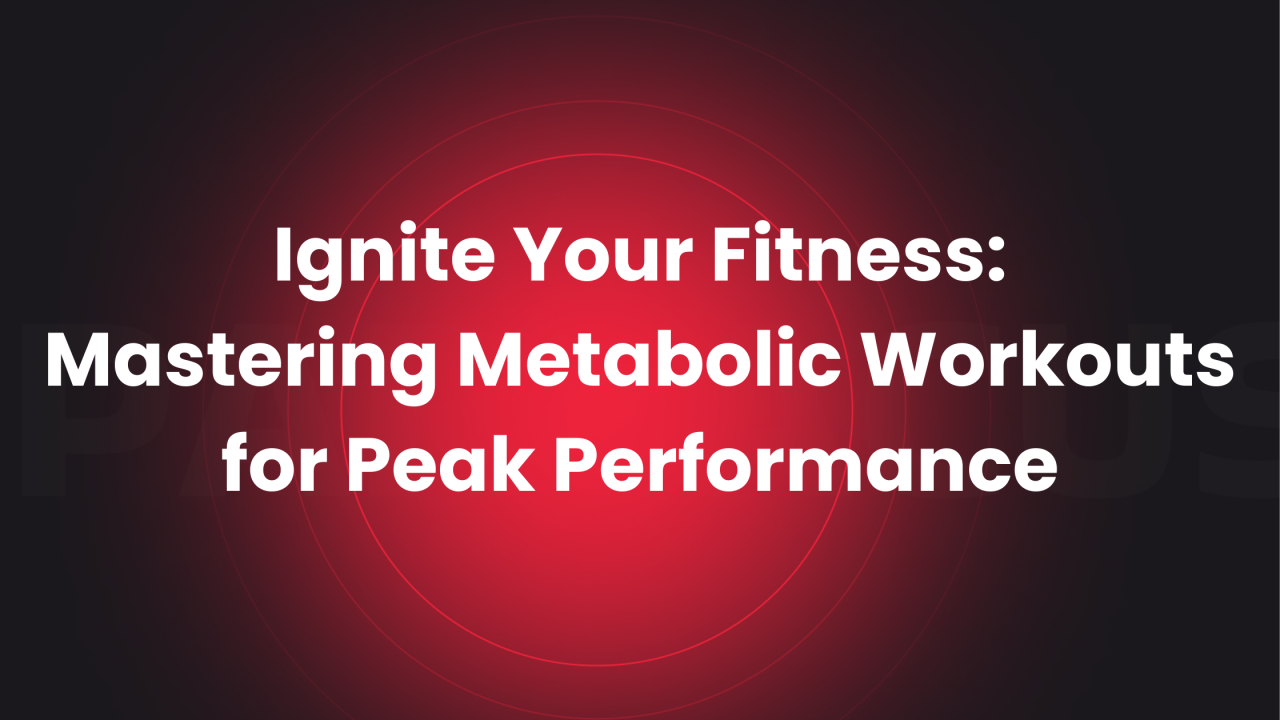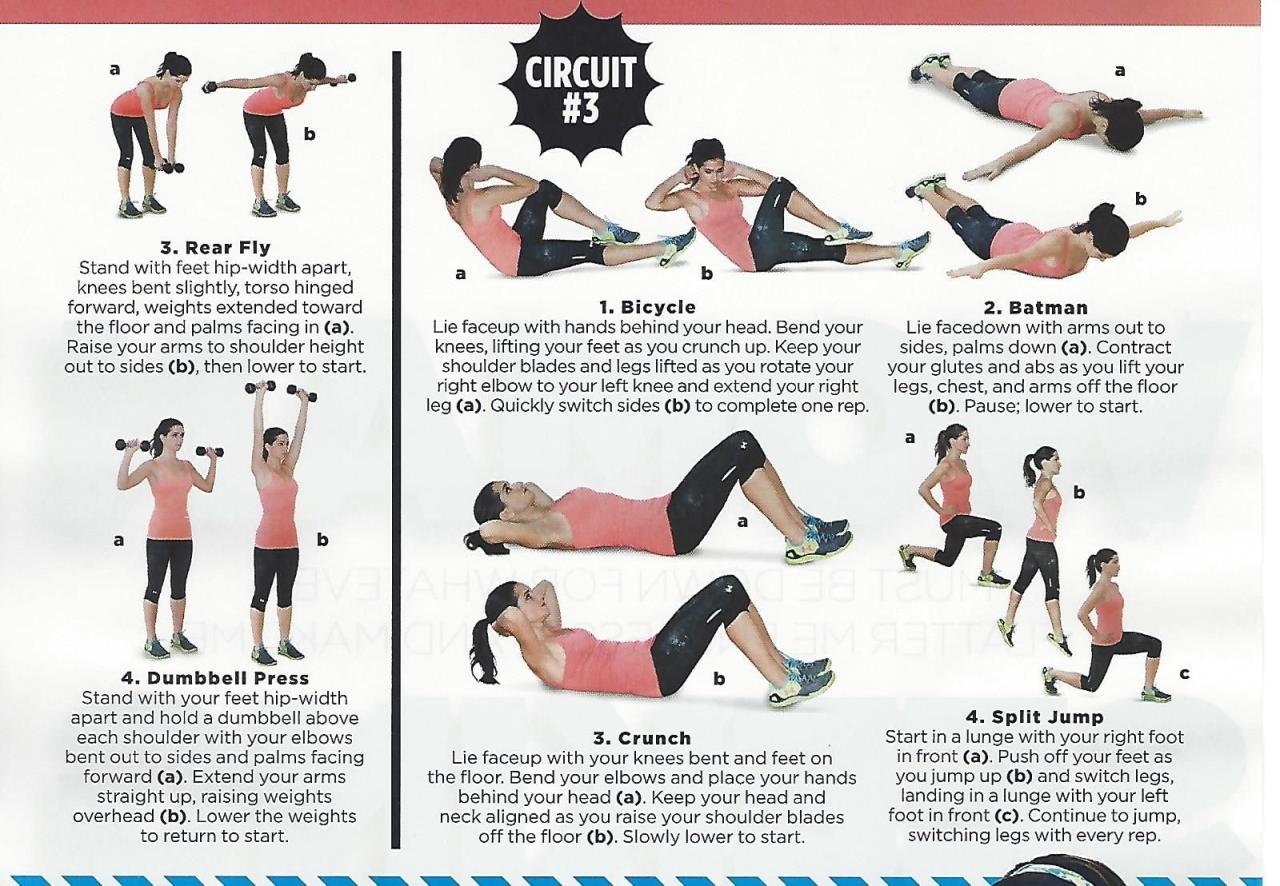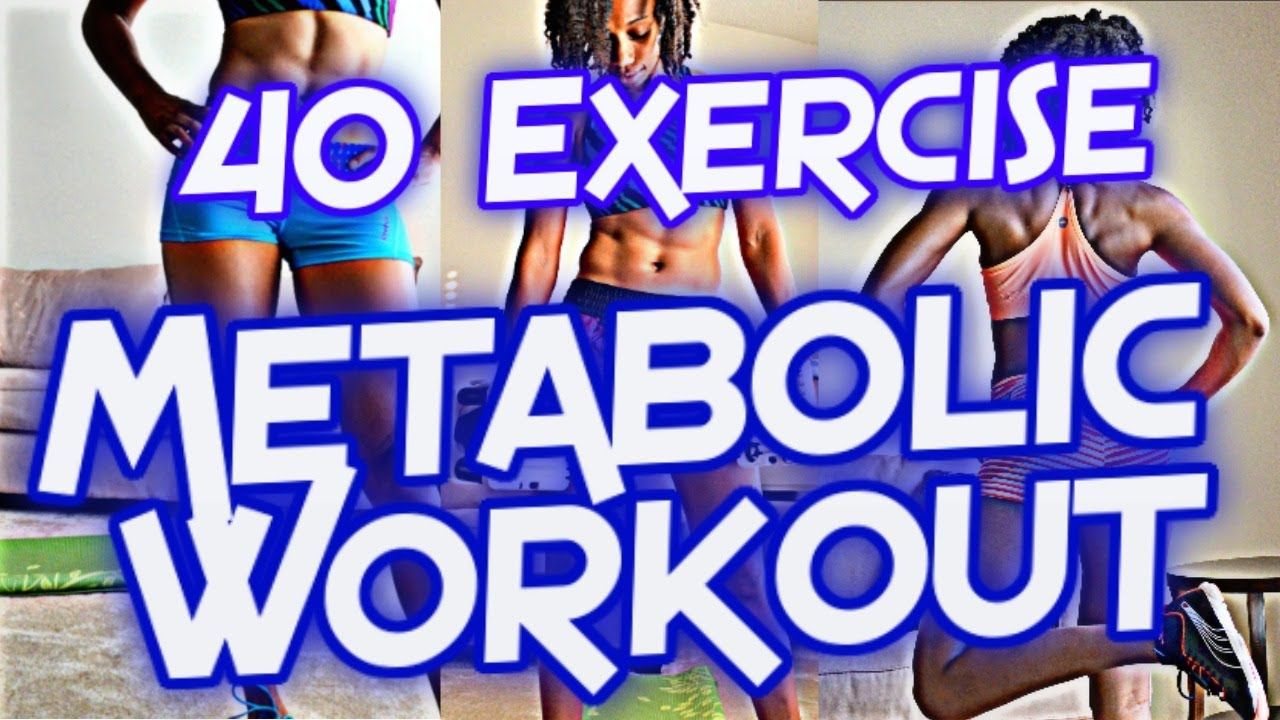Metabolic training workout for beginners sets the stage for this enthralling narrative, offering readers a glimpse into a story that is rich in detail with casual formal language style and brimming with originality from the outset.
Metabolic training is a dynamic form of exercise that targets the body's metabolism, making it an ideal choice for beginners looking to kickstart their fitness journey. In this guide, we will delve into the benefits, exercises, and essential tips to help beginners navigate the world of metabolic training effectively.
Introduction to Metabolic Training Workout for Beginners
Metabolic training is a form of exercise that involves high-intensity interval training (HIIT) to boost your metabolism and burn calories. This type of workout focuses on increasing your heart rate and engaging multiple muscle groups simultaneously, making it an efficient way to improve overall fitness levels.Metabolic training differs from traditional cardio or strength training by combining both elements into one workout.
Instead of focusing solely on cardiovascular endurance or strength building separately, metabolic training integrates both aspects to maximize calorie burn and improve muscle tone.
Examples of Metabolic Training Exercises for Beginners
- Bodyweight Squats: Perform squats with proper form to target your quads, hamstrings, and glutes while elevating your heart rate.
- Mountain Climbers: Get into a plank position and alternate bringing your knees towards your chest quickly to engage your core and increase cardio intensity.
- Kettlebell Swings: Use a kettlebell to swing between your legs and up to shoulder height, working your posterior chain and boosting cardiovascular endurance.
- Burpees: Start in a standing position, drop into a push-up, jump your feet back in, and explosively jump up to complete one rep, combining strength and cardio in one movement.
Setting Up a Safe and Effective Metabolic Training Workout

When it comes to metabolic training workouts for beginners, ensuring safety and effectiveness is crucial. This involves proper warm-up, choosing the right intensity level, and structuring the workout routine appropriately.
Importance of Warming Up
Before diving into a metabolic training session, it is essential to warm up the body to prepare the muscles and joints for the upcoming workout. A good warm-up helps increase blood flow, boosts heart rate gradually, and enhances flexibility, reducing the risk of injury during the workout.
Choosing the Right Intensity Level
For beginners, it is important to start with a moderate intensity level that challenges the body without pushing it too hard. Listen to your body and adjust the intensity based on your fitness level. Gradually increase the intensity as you progress and feel more comfortable with the exercises.
Structuring a Beginner-Friendly Workout Routine
When creating a metabolic training workout routine for beginners, focus on incorporating a mix of cardio, strength, and flexibility exercises. Start with a dynamic warm-up, followed by intervals of high-intensity exercises and active recovery periods. Aim to work different muscle groups and include exercises that target both strength and endurance.
Essential Equipment and Space Needed for Metabolic Workouts

When setting up for metabolic training, it's important to have the right equipment and enough space to perform the exercises safely and effectively. Here's what you'll need:
Basic Equipment for Metabolic Training
- A set of dumbbells or kettlebells for strength training exercises.
- A stability ball for core workouts and balance training.
- A jump rope for cardiovascular conditioning and agility drills.
- A resistance band for added resistance during exercises.
- A yoga mat for floor exercises and stretching routines.
Space Requirements for Metabolic Workouts
For metabolic workouts, you'll need enough space to move freely and perform exercises without any obstructions
Alternatives for Equipment
If you don't have access to certain equipment, don't worry! There are always alternatives that you can use:
- If you don't have dumbbells or kettlebells, you can use water bottles or canned goods as makeshift weights.
- If you don't have a stability ball, you can perform core exercises on a mat or carpeted floor.
- If you don't have a jump rope, you can do high knees or jumping jacks to get your heart rate up.
- If you don't have a resistance band, you can use your body weight for resistance or invest in a set of inexpensive resistance bands.
Monitoring Progress and Adapting Metabolic Workouts
Tracking progress and adapting workouts are crucial aspects of metabolic training for beginners to ensure continuous improvement and prevent plateaus.
Tracking Progress with Metabolic Training
One effective way for beginners to track progress in metabolic training is by keeping a workout journal. Recording details such as exercise routines, repetitions, weights used, and rest times can help track improvements over time. Additionally, taking measurements of body weight, body fat percentage, and before-and-after photos can provide visual evidence of progress.
Adjusting Workout Intensity
- As beginners become fitter and more accustomed to metabolic workouts, it is essential to adjust the intensity of the exercises to continue challenging the body. Gradually increasing weights, repetitions, or shortening rest periods can help maintain progress.
- Introducing new exercises or variations can also prevent the body from adapting to the routine, ensuring that muscles are continually stimulated for growth and development.
Strategies for Preventing Plateaus
- Periodization is a useful strategy to prevent plateaus in metabolic training. By dividing workouts into different phases with varying intensities and focuses, the body is constantly challenged and stimulated for growth.
- Implementing high-intensity interval training (HIIT) or circuit training can also help prevent plateaus by keeping the body guessing and adapting to new challenges.
- Listening to the body's signals and adjusting workouts accordingly is crucial in preventing overtraining and ensuring continued progress. Rest and recovery are as important as the workouts themselves for optimal results.
Concluding Remarks

In conclusion, metabolic training offers a unique and effective approach for beginners to enhance their fitness levels and achieve their goals. By incorporating the right exercises, equipment, and strategies, beginners can progress steadily and avoid plateaus in their fitness journey.
Embrace the power of metabolic training and unlock your full potential today.
FAQ Insights
What is metabolic training and how can it benefit beginners?
Metabolic training involves high-intensity exercises that boost metabolism and burn calories efficiently, making it ideal for beginners to improve fitness levels and lose weight simultaneously.
How does metabolic training differ from traditional cardio or strength training?
Unlike traditional workouts, metabolic training focuses on quick, intense bursts of exercise followed by short rest periods, resulting in increased calorie burn and metabolic rate.
What are some beginner-friendly metabolic training exercises?
Examples of beginner-friendly metabolic training exercises include kettlebell swings, mountain climbers, burpees, and jumping jacks.
How can beginners track progress with metabolic training?
Beginners can track progress by monitoring workout duration, intensity levels, and improvements in strength and endurance over time.
What are some strategies to prevent plateaus in metabolic training?
To prevent plateaus, beginners can vary workout intensity, incorporate new exercises, and ensure proper nutrition and rest for optimal recovery and progress.